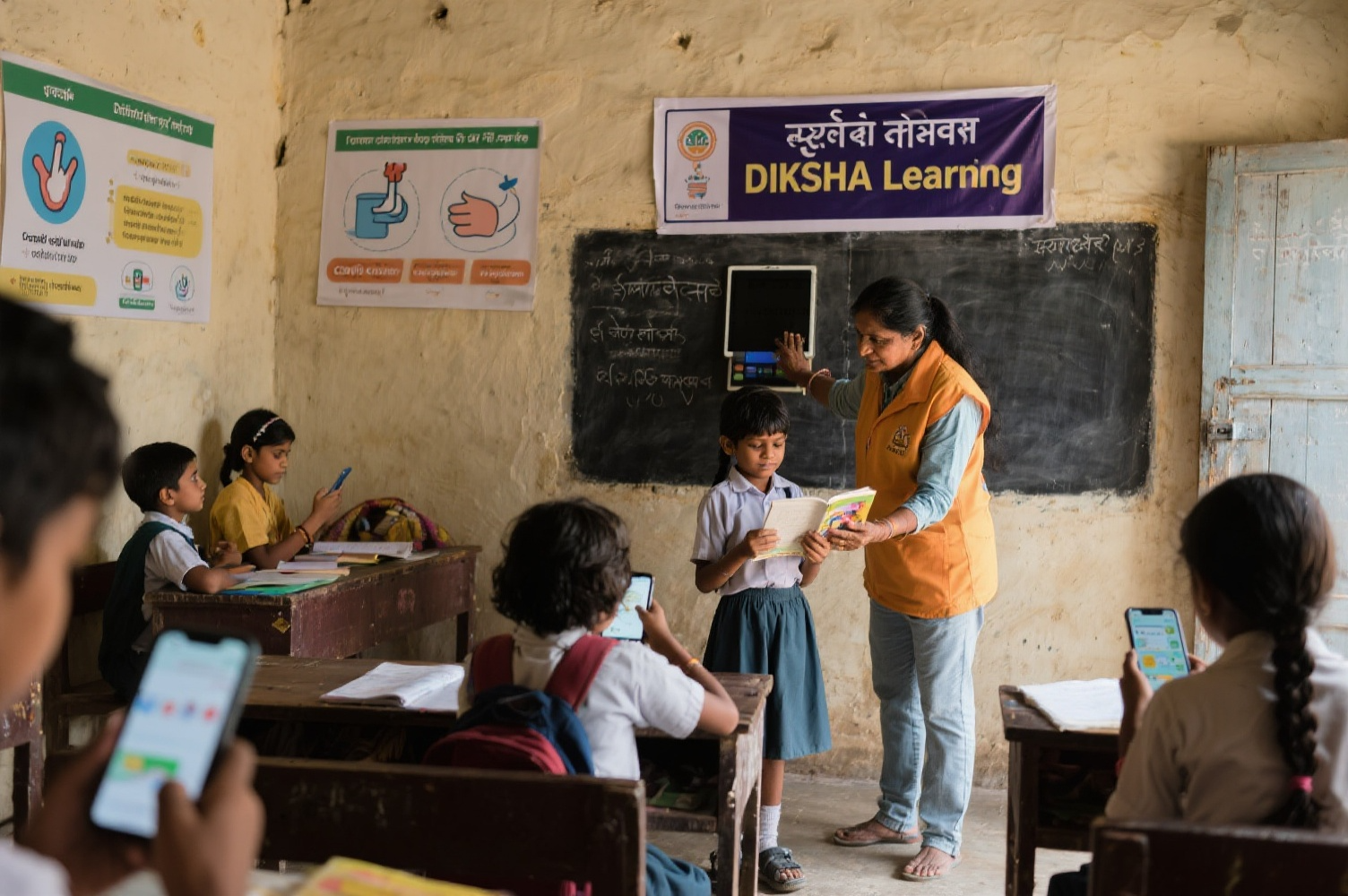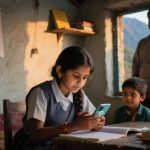- December 8, 2023
- by Educational Initiatives
- Blog
- 0 Comments
(based on a talk at Shiksha Sanskriti Uthan Nyas Conference, July 24, 2021)
Covid has been devastating at so many levels – just the magnitude of the human tragedy is unprecedented. Few in the country have been left unscathed by its impact. And yet, we need to think and move ahead with resolution.
How will we remember Covid? We believe that this is the important point for us to focus on. 5 or 10 years from now, will Covid be seen only as something that shattered lakhs of lives and livelihoods? Or can there be something positive that comes out of this tragedy? What we do today will determine the answer to that question. (Remember that ‘Y2K’ and subsequent ‘dotcom bust’ were crises for the western world in 2000-01, but India actually benefitted due to the off-shoring movement that it helped start).
We know that the entire education ecosystem has suffered due to Covid – schools, teachers, parents and students have all had to go through probably the most difficult time in memory. Yet, there is a silver lining to this cloud that we should not ignore. Firstly, we have been forced to experiment with things that we probably would not have, otherwise. Teachers picked up technology skills, classes on Zoom and Google Classroom became the norm and we realised we can learn not only from those physically near us but even those far, far away. This ‘benefit of forced experimentation’[1] means that while we realise that online education can never truly make up for the human touch, we will also never go back to the ‘offline-only’ learning mode we came from. Even at a national level, programmes like Diksha are now a part of every state and every school. As somebody said, Covid has taught us that ‘Learning is not a place or an activity, but an outcome’.
Winston Churchill once said that we should ‘never waste a good crisis’. Can we use Covid to build education back better than it was?
The situation pre-Covid: For this, it is important to realise that we were not in a very good place even before Covid. A number of studies have shown the ‘learning crisis’ the system was in. By our estimates, less than 30% of students in India are acquiring grade-appropriate competencies beyond grade 3.
Secondly, before Covid, ‘EdTech’ meant having a few computers to show (in many cases) or for students to spend a period a week with. There was an unwritten conviction that real education cannot be done through technology. As creators of EdTech products like Mindspark, we were often asked by sceptics, “If teachers did their jobs well, we wouldn’t need these EdTech programs, would we?” We would always explain that good EdTech programs support and enhance the teaching prowess of a teacher.
A third widespread problem in a system like India’s is what economists call ‘isomorphic mimicry’ or ‘institutional isomorphism’. Simply put, it means that our institutions tend to do things that are generally correlated with good learning, or have led to improved learning outcomes in other settings, but do not check if doing those things actually improve learning outcomes in their context. For example, many education officials believe that having a list of Learning Outcomes and mapping questions and content to them leads to learning. That this is not true can be concluded simply from the fact that the idea of mapping questions to such outcomes (then called ‘Minimum Levels of Learning’) has been a feature of Indian systems since 1991 when the idea was first introduced. What matter more are the quality of questions, teaching and classroom activities. In fact, now that Covid has given EdTech a ‘good name’, we need to guard against governments or institutions acting as if merely providing EdTech-based learning leads to improved learning. It does not[1].
The Covid Impact: Research[2] has shown that in low-learning systems, even a learning stoppage of a few months can cause students to fall back by years. This surprising finding is also due to the importance of the early years in children’s education. Another study[3] suggested that while earlier 53% of students would not learn to read by age 10 (putting them at a permanent learning disadvantage), Covid may add 10% to this group. Covid may negatively impact lifetime earnings of poor children by about 15%!
We recently analysed learning data from about 15 lakh students of middle school in a major Indian state. We found that, across subjects, the percentage of zero-scores per question had risen notably over pre-pandemic levels. Many independent studies have confirmed that this learning loss – with school closures having extended for so long – is nothing short of a crisis.
Like in many such crisis, Covid has had a completely disproportionate impact on the poor. Specifically, higher socio-economic status, educated mothers and access to the internet and smartphones, have been identified as the key factors that determined the differential impact of Covid – creating a sharp schism and two distinct groups of students. Ironically, while students in one group have suffered tremendously, at the other extreme students seem to have actually from the greater parental supervision and fewer opportunities for ‘distraction’. Together, this means that disparities have been increased by this crisis.
How have we responded as government and society? Overall, we can say that India’s response to ensure continued learning at home within the private and public school system has been fairly comprehensive and quick (though there may well be some isomorphic mimicry at work here). In general, government and civil society have worked together and boosted online learning through virtual classes, phone-apps and web-based educational portals. The national education platform DIKSHA usage has been used by most states to share content with teachers and students. The government launched TV channels devoted to telecasting educational programmes 24X7 on Swayam Prabha and many NGO’s partnered in this. Tools like WhatsApp have been used by many states to facilitate communication and learning-at-home.
In addition to the steps of governments, many organisations and NGOs have tried innovative methods to ensure children continue to learn even under these difficult conditions. Our organisation EI reached remote areas of the country with its Mindspark Personalised Adaptive Learning programme available in 9 Indian languages covering language, Mathematics and Science. Here are some pictures of students using this programme on smartphones in remote parts of the country, though it is also true that hardly 10% of students who were using Mindspark in their government schools earlier were able to access and use smartphones.

Naturally, all the above does NOT imply that the response was adequate given the scale of the problem – far from it. The quick and fairly comprehensive first steps need to bolstered by carefully thought through and quality-focussed follow-on steps.
Some Suggestions: Based on all this, here are some suggestions drawn from research and the experience of various practitioners:
- Beware of the self-perpetuating myth that high technology is too expensive or not for the poor: Technology used properly can help these students leapfrog – both from a learning and eventually, economic perspective. It is our responsibility, as society and government to make sure that high speed internet and tablets or smartphones become available to all students.
- Expand activities that focus on active learning or assessment-cum-learning: Certain learning methods are active and require learners to engage with the process, while others are passive and allow them to stay inactive mentally. As far as possible, focus on activities or question-answers where children have to demonstrate their learning, thus providing learning feedback as well.
- Empower teachers with tools and resources that directly promote learning: Tools that help teachers in the classroom, either to identify student learning levels or teach them more effectively or provide them data on how children should be doing helps teachers plan their lessons and improve them over time.
- Have clear guidelines nationally for post-Covid opening and precautions – but leave final decisions to states and local governments: While good guidelines are important and can be centrally developed, the implementation is best done at a local level.
- Prioritize teacher and school staff vaccination using a vaccine-to-people model. Open classes of early grades on priority even if staggered: The loss of learning in the early grades can be permanent and restarting learning for these students should be of the highest priority.
- Focus on independent and 3rd party assessments as a key part of learning initiatives: How do we know if our well-intentioned efforts are working? How do we improve what is working, without falling into the trap of isomorphic mimicry? The answer is high-quality, 3rd party learning assessments which should be seen as part of every intervention. A Diksha initiative should be paired, for example, with a Diksha learning impact measurement initiative – something which is not happening anywhere, to the best of our knowledge.
- Make the DIKSHA platform 2-way allowing student participation and make anonymized learning data available: The Diksha platform has already in some ways been transformative for teachers and teacher training. Allowing students to respond and making the anonymized learning data available publicly will certainly be a game-changer for the country.
- Pay honorariums to older students in villages to teach primary students to reduce learning loss impact: Dr Rukmini Banerjee of Pratham shared this idea which can not only impact learning levels positively, it can offer financial support and an opportunity to make a difference to poor, bright students. Community collaboration models of learning run by students and young mothers that emerged during the pandemic helped create a learning continuum at home – these should be supported after the pandemic as well.
[1] https://voxeu.org/article/benefits-forced-experimentation
[2] https://www.povertyactionlab.org/sites/default/files/research-paper/NBER-23744-EdTech-Review.pdf
[3] https://www.ox.ac.uk/news/2020-05-29-new-study-reveals-long-term-impact-disaster-related-school-closures
[4] https://www.worldbank.org/en/news/press-release/2020/12/02/pandemic-threatens-to-push-72-million-more-children-into-learning-poverty-world-bank-outlines-new-vision-to-ensure-that-every-child-learns-everywhere



